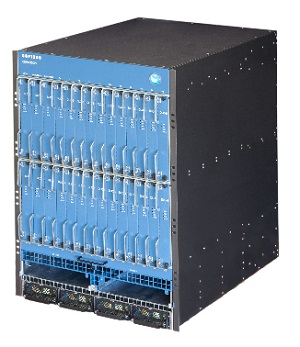CommScope Sparks Its CCAP Roadmap

CommScope is gearing up for the emerging Converged Cable Access Platform market with the introduction of two products that will start off as dense edge QAM and eventually sprinkle in features that will transition them into fully-integrated CCAPs that can support cable video, voice and data services and put MSOs on a path toward an all-IP future.
CommScope’s strategy will center on the Converged Services Platform 640, a nine-rack-unit model that can pack in up to 9,600 downstream QAMs and aggregate throughput of 640 Gbps; and the CSP 1280, a heftier 14-rack-unit device that supports up to 19,200 downstream QAMs and 1.28 Tbps of throughput.
In the second phase of development, CommScope will add upstream DOCSIS and MAC (media access control), native IP processing, EPON, and EPON over Coax (EPoC) interfaces. In the final phase, it will tack on the upstream DOCSIS CMTS component.
CommScope did not reveal a timeframe for phase two and three. “It is our belief that cable operators will deploy a CCAP chassis as mega QAMs,” Sunil Frida, CommScope's director of global business development, write in a blog post outlining the company’s CCAP product strategy. CommScope, he added, will be demoing the products at next week’s SCTE Cable-Tec Expo in Atlanta.
CommScope’s CCAP strategy appears to be somewhat aligned with that of Harmonic, which is also starting off with edge QAMs, then adding in the other components. As another example, Arris’s CCAP-pointing E6000 chassis is starting life as a super-sized cable modem termination system (CMTS) before it integrates the video components.
They’ll all be facing off with two other CMTS and edge QAM vendors – Cisco Systems and Casa Systems – that have also developed CCAP product and are revving up to target a market that’s expected to be worth more than $1 billion by 2017, according to Multimedia Research Group.
Revenues for the combined CMTS/edge QAM market reached $313 million in the second quarter of 2013, down 4% from the previous quarter, a decline driven by higher volumes matched with reduced port pricing, according to Infonetics Research.
The smarter way to stay on top of the multichannel video marketplace. Sign up below.
